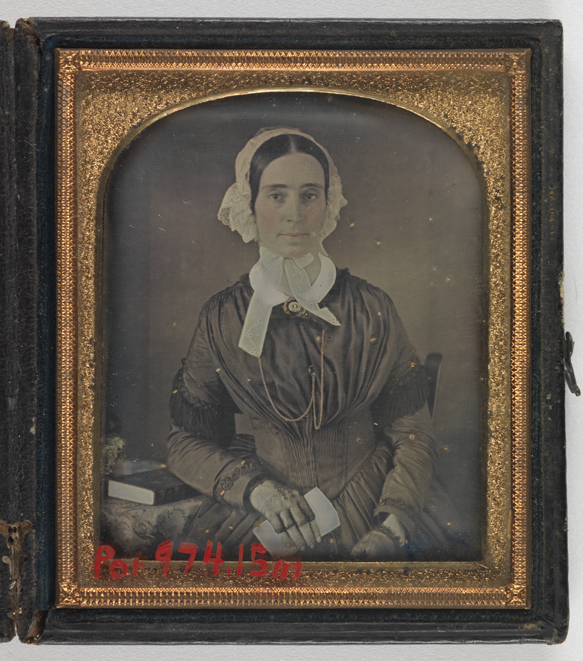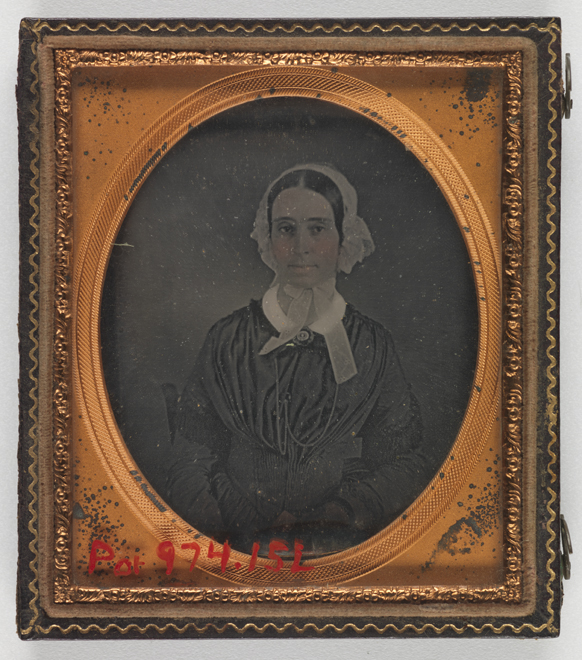Daguerreotypes are the earliest form of permanent photographic imagery. They are made by capturing an image on a polished silver-coated, light-sensitive copper plate, which is developed with mercury vapor and fixed with a salt solution. Because the finished plate is viewed from the side that was closest to the subject, when the daguerreotype is created, the image is laterally reversed—a mirror image. The use of a reflective prism could produce a right-reading image, but that was rarely done primarily because the resulting light loss would require already-long exposure times to be even longer. To get a right-reading image, the easiest solution was to make a daguerreotype of the daguerreotype. The resulting copy would read correctly. Each daguerreotype is a one-of-a-kind photograph. Because there is no negative, there is no way to produce a subsequent print.
Two daguerreotypes of Lucy Goode Tucker Chambers in the VMHC Collections are mirror images of one another. With this set of portraits of Chambers, we are left wondering if we have two images because 1) someone wanted a right-reading image or 2) someone wanted a second copy. We’ll never know for sure, but we can enjoy this example of early photography either way.


